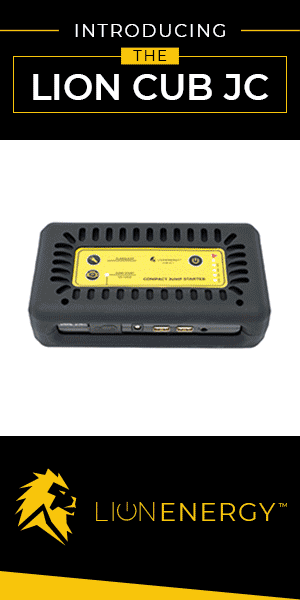With the Solar Power Bank for Security Camera, never worry about battery life again. Harness the power of the sun to keep your surveillance system powered up and ready to capture every moment. No more wires or battery changes, just peace of mind.
Introduction
Imagine never having to worry about your security camera running out of battery again.
With the new Solar Power Bank for Security Camera, you can now keep your surveillance system powered up and ready to capture any moment, day or night.
This innovative device harnesses the power of the sun to provide a reliable and sustainable source of energy for your camera.
No more cumbersome wires or frequent battery changes—simply install the Solar Power Bank and enjoy peace of mind knowing that your security is always protected.

Overview of Solar Power Banks for Security Cameras
What is a solar power bank?
A solar power bank is a portable device that uses solar panels to convert sunlight into electrical energy and store it in a battery.
It is designed to provide a continuous and reliable power source for security cameras, ensuring they remain operational even in remote or off-grid locations.
Why do security cameras need a power source?
Security cameras play a crucial role in surveillance and monitoring, whether it’s for residential, commercial, or industrial purposes.
To function effectively, security cameras require a constant power supply. While traditional power sources such as electricity or batteries are widely used, they may not always be available or practical in certain situations.
This is where solar power banks come in, providing an efficient and sustainable alternative for powering security cameras.
Advantages of using solar power banks for security cameras
There are several benefits to using solar power banks for security cameras:
- Energy efficiency: Solar power banks harness the power of the sun, which is a renewable energy source. By utilizing solar energy, they reduce reliance on fossil fuels and minimize carbon emissions.
- Cost savings: Solar power banks eliminate the need for expensive electrical wiring or frequent battery replacements. They offer a cost-effective solution for powering security cameras, especially in remote areas where electricity infrastructure may be lacking.
- Flexibility and portability: Solar power banks are compact and portable, allowing for easy installation and relocation. They can be used in various settings, whether it’s a residential property, commercial facility, or outdoor surveillance.
- Reliability: Solar power banks provide a consistent power supply, ensuring continuous camera operation even during power outages or in areas with unreliable electricity.
- Environmentally friendly: By utilizing clean and renewable solar energy, solar power banks contribute to a greener and more sustainable environment. They help reduce dependence on non-renewable energy sources and minimize the carbon footprint associated with traditional power generation.
Factors to Consider Before Purchasing a Solar Power Bank for Security Cameras
Power requirements of the security camera
Before purchasing a solar power bank, it’s crucial to determine the power requirements of your security camera.
Check the user manual or specifications provided by the manufacturer to understand the voltage and current needed for optimal camera performance.
This information will help you select a solar power bank that can meet the power demands of your specific camera model.
Battery capacity
The battery capacity of a solar power bank determines how long it can provide power to the security camera.
Consider the duration for which you want the camera to be operational without direct sunlight exposure. Look for power banks with higher capacity batteries to ensure sufficient energy storage and extended camera runtime.
Solar panel efficiency
The efficiency of the solar panel is another essential factor to consider. Higher efficiency panels can convert more sunlight into electrical energy, resulting in faster charging and improved overall performance of the power bank.
Look for solar panels with a high conversion efficiency rating, such as monocrystalline or polycrystalline panels, to maximize the power generated.
Weather resistance
Since solar power banks for security cameras are typically installed outdoors, they need to withstand various weather conditions.
Look for power banks with weather-resistant features, such as waterproof or dustproof designs, to ensure durability and longevity.
This is especially important in areas with extreme weather conditions or frequent exposure to rain, snow, or strong winds.
Durability and build quality
Durability is a crucial factor when selecting a solar power bank for security cameras. Ensure that the power bank is made from high-quality materials that are resistant to impact, corrosion, and UV radiation.
A robust build quality will ensure the power bank can withstand outdoor elements and continue to function reliably over an extended period.
Additional features
Some solar power banks come with additional features that can enhance the overall functionality and convenience. For example, built-in USB ports or power outlets can allow for charging other devices simultaneously.
Look for power banks with these added features to expand the usability of the solar power bank beyond just powering security cameras.
Installation and Setup
Choosing the optimal location for the solar panel
When installing a solar power bank for security cameras, selecting the right location for the solar panel is crucial. Ideally, it should be positioned where it can receive maximum sunlight exposure throughout the day.
Avoid shading from nearby trees, buildings, or other structures that can obstruct sunlight. Carefully assess the location to ensure it provides the necessary solar radiation for efficient charging of the power bank.
Mounting the solar panel securely
To ensure the stability and effectiveness of the solar panel, it should be mounted securely.
Depending on the specific solar power bank model, there may be different mounting options available, such as ground stakes, mounting brackets, or pole mounts.
Follow the manufacturer’s instructions and guidelines for proper installation and ensure that the solar panel is firmly attached to prevent any movement or damage caused by wind or other external factors.
Connecting the solar power bank to the security camera
Once the solar panel is properly installed, connect the solar power bank to the security camera.
The power bank should come with appropriate cables and connectors for this purpose.
Follow the provided instructions to establish the connection, ensuring that the solar power bank is correctly integrated into the camera’s power supply system.
Double-check the connections to prevent any loose or faulty connections that could disrupt the power flow.
Monitoring and Maintenance
Monitoring the charge level of the solar power bank
Regularly monitoring the charge level of the solar power bank is essential to ensure uninterrupted camera operation.
Most solar power banks come equipped with LED indicators or digital displays that show the remaining battery capacity or charging status.
Keep an eye on these indicators and recharge the power bank whenever necessary to maintain optimal camera performance.
Cleaning and maintenance of the solar panel
To maintain the efficiency of the solar panel, regular cleaning is necessary. Dust, dirt, or debris can accumulate on the panel’s surface, reducing its ability to absorb sunlight.
Clean the panel using a soft cloth or sponge and a mild detergent if needed. Be gentle and avoid using abrasive materials that could scratch or damage the panel.
Regular maintenance will help maximize the power generation and extend the lifespan of the solar power bank.
Troubleshooting common issues
In case of any issues or malfunctions, troubleshooting can help identify and resolve the problem. Refer to the user manual or contact the manufacturer’s customer support for guidance on specific troubleshooting steps.
Some common issues may include connection problems, insufficient charging, or reduced camera performance.
By identifying the root cause and following the recommended troubleshooting steps, you can ensure the solar power bank continues to function optimally.

Tips for Maximizing Efficiency and Performance
Positioning the solar panel for optimum sunlight exposure
To maximize the efficiency and performance of the solar power bank, position the solar panel in an area where it receives maximum sunlight exposure throughout the day.
Aligning the panel towards the sun’s path and avoiding shading from nearby objects will ensure optimal solar energy absorption.
Regularly cleaning the solar panel
Regularly clean the solar panel to remove dust, dirt, and debris that can accumulate on its surface. A clean panel will ensure that it can effectively absorb sunlight and convert it into electrical energy, maximizing the charging capacity of the power bank.
Using power-saving settings on the security camera
To further optimize the efficiency of the solar power bank, utilize power-saving settings on the security camera. Adjust the camera settings to reduce power consumption when not actively recording or monitoring.
This will help extend the camera’s runtime and ensure efficient utilization of the solar power bank’s stored energy.
Cost and Return on Investment
Initial investment
The initial investment for a solar power bank for security cameras includes the cost of the power bank itself, the solar panel, and any additional accessories or installation fees.
Prices can vary depending on the brand, model, and specifications of the solar power bank. However, considering the long-term cost savings and environmental benefits, the initial investment is often outweighed by the advantages of using solar power.
Long-term cost savings
Using solar power banks for security cameras can lead to significant long-term cost savings. By eliminating the need for electricity or frequent battery replacements, users can reduce their operational expenses.
Additionally, solar power banks can provide uninterrupted camera operation during power outages, avoiding potential losses or damage due to security system disruptions.
Calculating the return on investment
To calculate the return on investment (ROI) for a solar power bank, consider the initial investment, estimated cost savings, and the projected lifespan of the power bank.
By comparing the cost savings over time to the initial investment, you can determine how long it will take to recoup your investment and start realizing the benefits of using solar power.
Alternative Power Solutions for Security Cameras
Battery-powered security cameras
Battery-powered security cameras offer another alternative power solution. These cameras rely on rechargeable batteries for operation, eliminating the need for a constant power supply.
However, they may require frequent battery replacements or recharging, depending on usage and battery capacity.
Wired power supply options
Wired power supply options, such as traditional electricity or Power over Ethernet (PoE), are commonly used for security cameras.
These options provide a reliable and consistent power source but may require access to electrical outlets or structured cabling infrastructure, limiting their flexibility in remote or off-grid locations.
Conclusion
Solar power banks provide a practical and eco-friendly solution for powering security cameras. With their energy efficiency, cost savings, and reliability, they offer numerous advantages over traditional power sources.
By considering factors such as power requirements, battery capacity, solar panel efficiency, weather resistance, durability, and additional features, individuals and businesses can select the right solar power bank for their security camera needs.
With proper installation, monitoring, and maintenance, solar power banks can provide consistent and sustainable power to keep security cameras operational.

